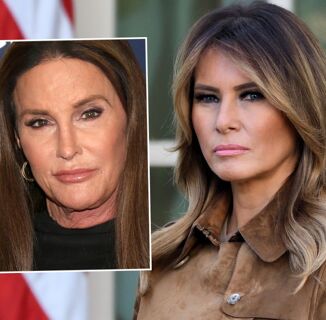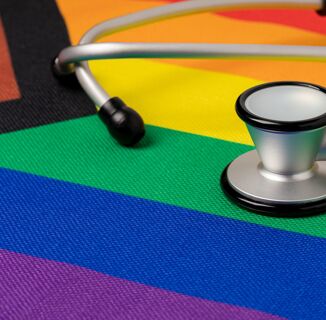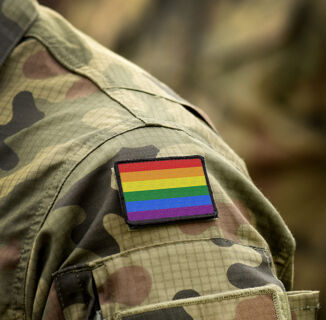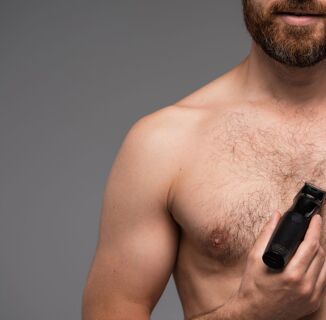In 2012, after a gay man was diagnosed with HIV, his doctor denied him treatment and barred his family from visiting. The given reason: “This is what he gets for going against God’s will.” In a similar case, a counselor refused to provide any counseling about relationship issues to a gay graduate student who was experiencing depression.
As many young LGBTQ people understand, this happens far too often. Even in 2018, discrimination and stigma run rampant in America’s healthcare industry. Insensitive responses from health care providers are one of the main reasons that LGBTQ adolescents, especially young gay and bisexual men, are discouraged from continuing care and accessing sexual health services. This week, as we recognize National Gay Men’s HIV/AIDS Awareness Day, we have an opportunity to reflect on America’s history with the HIV/AIDS crisis, persistent LGBTQ healthcare discrimination, and the work left to be done to eliminate the barriers that LGBTQ people face navigating the healthcare system.
These obstacles aren’t new. Gay and bisexual men have historically faced barriers in obtaining adequate healthcare resources. Throughout much of the 1980s and ’90s, people living with HIV, specifically gay and bisexual men, faced aggressive forms of discrimination, from being rejected by hospitals and left to die, to being denied health care by insurance companies. But while much progress has been made over the last three decades, stigma still exists.
When someone is shamed or denied care, they seek out other providers — or stop pursuing care altogether. Research from the Center for American Progress finds that 18 percent of LGBTQ people believe that if they were refused care at a hospital, it would be “very difficult” or “not possible” to find an alternative provider. Outside of major metropolitan areas, that number spikes to 41 percent. A recent report on anti-LGBTQ discrimination by Human Rights Watch noted that several LGBTQ people in the U.S. are unable to find services in their area, encounter discrimination or refusals of service in healthcare settings, or delay care because of concerns of mistreatment.
Young men who have sex with men (MSM) — especially Black and Latinx men — are at a higher risk for sexually transmitted diseases like HIV. While some attribute the elevated risk to sexual behaviors, studies illustrate that societal disparities such as racism, homophobia, and poverty are at the core of this problem. The result is that Black and Latinx gay and bisexual young men report having higher levels of medical mistrust, lower health literacy rates, and poor insurance coverage.
Adding deep levels of stigma to this equation has serious effects on the lives of young gay and bisexual men. They manifest in a lack of information about condom usage, ignorance of pre-exposure prophylaxis (PrEP), and insensitivity in addressing HIV prevention and treatment options. The CDC reports that of the nearly 40,000 HIV diagnoses in 2016, about 21 percent were among young people between the ages of 13 and 24, and 18 percent were among young men who have sex with men. Of all youth diagnosed with HIV, a startling four out of five were between the ages of 20 and 24.
Young MSM, in addition to other LGBTQ adolescents, benefit from health care environments where they feel welcomed and respected. When practitioners are inclusive of our gender identities, sexual orientations, and race and ethnicities, we are more likely to seek out sexual health services. It’s everyone’s job to ensure that we receive affirming and equitable healthcare and providers and clinic staff can do a few things to get started:
- Adopt and publicly display patient and visitation non-discrimination policies that protect patients on the basis of sexual orientation, gender identity, and HIV status.
- Train staff on LGBTQ competency through His Health and the National LGBT Health Education Center which offer continuing education credits.
- Create an LGBTQ-youth friendly atmosphere that include posters and materials that reflect LGBTQ youth of color.
- Develop an LGBTQ youth advisory board that prioritizes youth of color and youth living with HIV, and authentically listen and address their concerns.
- Update intake forms to ask about sexual orientation and gender identity in addition to sex assigned at birth.
Much has changed in the 30-plus years of the HIV epidemic. We now have PrEP, effective treatment and a growing number of young gay and bisexual men who are demanding that their voices are included in all facets of HIV advocacy. On this National Gay Men’s HIV/AIDS Awareness Day, let us all take a moment to celebrate our successes, acknowledge the work that needs to continue and recommit to ending HIV.
Help make sure LGBTQ+ stories are being told...
We can't rely on mainstream media to tell our stories. That's why we don't lock our articles behind a paywall. Will you support our mission with a contribution today?
Cancel anytime · Proudly LGBTQ+ owned and operated
Read More in Impact
The Latest on INTO
Subscribe to get a twice-weekly dose of queer news, updates, and insights from the INTO team.
in Your Inbox












